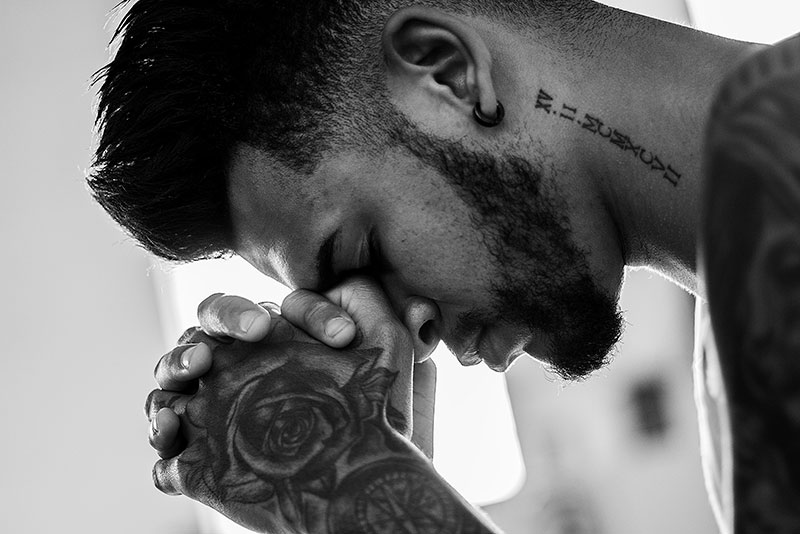By Jerry Avenaim | EXECUTIVE DIRECTOR |
Since its first celebration in 1992, October 10th is World Mental Health Day. On this day, all over the world there is an increased focus on mental health awareness, education, and advocacy to end the stigma around mental health conditions and their treatment.
The World Federation for Mental Health created World Mental Health Day as a global initiative to facilitate its members and supporters in over 150 countries to come together to:
- bring focused attention on the topic of mental health, and
- discuss how it affects people.
Each year, World Mental Health Day has a theme, and for 2022 the theme is Make Mental Health & Well-Being for All a Global Priority. To access the official World Mental Health Day action plans for online and offline activities, download the pdf toolkit.
What is Mental Health
Mental health is a state of well-being in which an individual can realize their own potential and cope with the normal stress of life, work productively and fruitfully, and be free to engage in making a contribution to their community.
The potential to be healthy mentally is an important part of our overall health, and it includes a person’s psychological, social, and emotional well-being. It affects how we think, feel, act, handle stress, relate to others, and make priorities and decisions.
Of the different conditions and illnesses that can affect a person’s mental health, people may experience mild, moderate, or severe impacts to their feelings, thoughts, and, in some cases, behaviors.

Who does it affect?
In short, everyone. Mental health issues affect people from every nationality, race, political affiliation, religious belief, age, gender, income level, orientation, profession, and relationship status. While certain people groups may experience one aspect of mental health less frequently, they are likely to be hard hit in another.
The one thing that is common all around the world is that people generally try to give the impression that they are doing better than they really are. Because of stigma and social conditioning, most people find it hard to admit to themselves or their family that they are struggling with something, and that can make it difficult to seek out appropriate help.
It can be strangely comforting to many to realize that their mental health issues are common, yet of the total annual budget for healthcare, the median of what is spent on mental health globally is less than 2%.
Globally:
- 1 in 4 people will experience a mental health issue that affects their well-being.
- 1 in 8 have a mental health disorder resulting in significant negative impacts to their thinking, emotional regulation, or behavior.
- Roughly 20% of the world’s children and adolescents have a mental health condition.
- Mental health conditions result in living with a disability from 1 to 5 years.
Numbers of those affected by Mental health conditions around the world
- Depression – 400 million – and it is a leading cause of disability
- Anxiety disorders – 301 million – 19% are under the age of 19
- Bipolar disorder – 40 million
- PTSD – 184 million
- Schizophrenia – 24 million
- Eating disorders – 14 million (of which 3 million are under the age of 19)
- Disruptive behavior and dissocial disorders – 40 MILLION

US:
Americans with mental health conditions by demographic groups
- Lesbian, Gay or Bisexual: 54.3%
- Non-Hispanic white: 51.8%
- Female: 51.2%
- Non-Hispanic mixed/multiracial: 43.0%
- Male: 37.4%
- Non-Hispanic black or African-American: 37.1%
- Hispanic or Latino: 35.1%
- Non-Hispanic Asian: 20.8%
Uninsured and Untreated
In the US, 11% (over 5.5 million) of adults with mental health conditions are uninsured, which drastically impacts their ability to get access to the right care. In the last 12 months, 56% (more than 27 million) of US adults suffering with mental illness received no treatment.
How does it affect people?
Mental health issues are a leading cause of disability globally, and in addition to the personal impact experienced by those who suffer directly or indirectly, there can also be significant economic cost to a society.
In the US, mental health issues affect tens of millions of individuals each year, and it is estimated that only half receive any or adequate treatment. In any year, 26% of adult Americans experiences a diagnosable mental health issue, and just under 10% from a depressive disorder.
In broad terms, mental health conditions fall into several categories including:
- Anxiety
- Cognitive decline
- Eating disorders
- Mood disorders
- Personality disorders
- Schizophrenia & psychotic episodes
- Substance-related issues

Substance abuse
In the past 12 months, the number of adults in the US reporting issues with substance abuse was 7.74% with 2.97% reporting issues with illicit drug use disorder, and 5.71% reporting issues with alcohol use disorder.
The numbers for substance abuse by state range from 12.30% in the District of Columbia to 5.98% in the state of Florida.
Suicide
Nationwide, the number of adults in the US with serious thoughts of suicide reached 11.4 million (4.58%) which reflects an increase of almost 700,000 people on the previous 12 months. By state, the range for runs from 3.79% in New Jersey to 6.19% in Utah.
While more women attempt suicide than men do, four times more men die of suicide then women. Most suicide deaths occurred in people with a diagnosable mental health disorder, and this is most typically a depressive or substance abuse disorder.
While it is a leading cause of death in people aged between 15 to 24, the highest rates are in Caucasian males aged over 85.
Depression, Anxiety, Bipolar, and Schizophrenia
Roughly 8.4% of adults in the US have had at least 1 major depressive episode, and men are only half as likely as women to experience major depression. People can develop major depression at any age, but it is most typical to experience the onset between 20 and 30 years old.
The risk for developing bipolar disorder is equal between men and women, and it affects over 2.6% of the population over the age of 18 in the US. For those who suffer with this condition, the average age of onset is in their early 20s
18% of Americans aged between 18 and 54 have an anxiety disorder which could be any of the following:
- panic disorder
- obsessive-compulsive disorder (OCD)
- post-traumatic stress disorder (PTSD)
- generalized anxiety disorder (GAD)
- phobias including
- agoraphobia
- social phobia
- specific phobia
The typical age for where panic disorder develops is between late adolescence and early adulthood. Obsessive-compulsive symptoms generally first occur in childhood or adolescence, and generalized anxiety can start at any age, but the highest risk for ranges from childhood to middle age
For those experiencing OCD, it is not uncommon to also have issues with eating disorders, depression or substance abuse.
For women, schizophrenia first presents between the age of 20 and 30, and between late teenage years and early 20s for men, and overall it affects around 1% of the population.
To take a deeper look at the numbers, read our in-depth article on mental health statistics.
Where can we make a difference?

In line with the 2022 theme for World Mental Health Day of making mental health and well-being for all a global priority, the majority of us will have the opportunity to contribute in one or more areas to make a difference
- in our own life.
- in our community.
- in our country.
A – In our own lives we can make time to:
- honestly assess our own attitudes to mental health and treatment.
- determine if the words and phrases we use every day help or hinder the cause.
- avail of any resources to learn more about mental health.
- take a personal inventory of our own mental health or seek treatment if needed.
Also, as part of the impact we can make close to home, while increasing our understanding about mental health conditions and taking better care of ourselves, we can be more mindful about both our family members and our friends.
B – In our community we can:
- Organize community events like marches, bicycle rallies, or vigils to allow people to gather to honor a group or person or to reflect as a community on issues related to mental health.
- Work with local libraries or community centers to host events with speakers from the professional community to talk about issues facing specific age groups.
- Approach local officials to create specific days when mental health can be a topic of focus to foster a healthier community.
C – In our country we can:
- Gather signatures to present to state senators to secure commitment to establish meaningful programs that:
- further normalize the conversation around mental health.
- address the stigma around discussing one’s struggles.
- ensure greater access to appropriate treatment.
- encourage individuals to seek it treatment.
As an example of changes that can take place at a national level, in an announcement on September 20, 2022, the US Preventive Services Task Force released a draft recommendation statement proposing screening for anxiety in adults can help identify anxiety early. The intention of the screening is to help identify those who are dealing with a stress response to normal daily events — one that is more intense and lasts longer than would typically be characterized as normal. This will possibly result in identifying instances of social anxiety disorder, agoraphobia, and generalized anxiety disorder.
The task force had received clinical recommendations to prioritize a focus on anxiety due to the impact of Covid-19 on people’s mental health, that saw a 25% increase in anxiety and depression globally, and numbers totaling almost 22% of young adults in the US receiving mental health treatment.
What is within our control to have better mental health?
Depending on the severity of certain issues someone may be facing, the likelihood is that they cannot be the author of their own path to wholeness, but there are typically things that are in our control that can make things better until we can avail of professional help, if it is needed.

While there may be seasons where we may not recognize stress or anxiety building moment by moment, it is common for individuals to experience stressors because of many common reasons including relational, financial, medical, and social issues. Not only are many of these issues stressful on their own, they are even more stressful when combined.
The following is a list of things you can do to help your own mental health, and even if a person is currently “doing okay,” developing a few of these habits will better position most people to weather an emotional storm:
Lifestyle
- Try something new or adventurous.
- Try to spend some time in the sun each day.
- Go for a 30-minute walk.
- Go old school and swap one shower for a long bath once a week.
- If you don’t have a pet, offer to walk a friend’s dog or housesit a friend’s cat.
- Find a time in your day or week to be without your phone or access to the internet.
- Buy a coloring book or print out free coloring pages.
- Find and try a different recipe for a favorite dish.
- Focus on sharpening your skills on the things you are good at.
Relationships
- Prioritize establishing frequent time with family and friends.
- Practice forgiving people (even if they never find out).
- Look for ways to eliminate regret about the past and fear about the future.

Diet
- Consider ordering supplements with omega-3 fatty acids.
Daily
- Find ways to be more present.
- Find laughter through watching funny videos or a comedy movie, or going to a comedy club.
Thought life
- Write down things that have been eating your lunch, then roll it up and throw it away.
- Be intentional about giving no space to negative self-talk or negative thoughts.
- Take a moment every day or week to write down 3 things you are grateful for.
- Journal accomplishments daily or weekly.
Seek professional treatment.
Conclusion
In order to join fully in supporting Global Mental Health Day, join with us in working towards their goals for having a global focus, which include:
- Heightened focus on personal well-being
- Preventing mental health conditions (reducing frequency and severity)
- Ensuring greater access to understanding, care, and treatment
- Driving toward enhanced recovery outcomes
- Reduction in disability, sickness, and death
Mental health is not just a concern in the US, and the US alone does not have all the answers, but together we can only move forward and make mental health more accessible one step at a time.
If you or someone you know is struggling in these hard times, please check out our support resource guide page.
Sources WHO | NAMI | Mental Health America | Johns Hopkins Medicine | NIMH | WHO | HealthData.org | National Library of Medicine | UpToDate | WHO | NIMH | Linder Center Of Hope | CDC | NIH NCBI | Mayo Clinic | HealthAffairs.org | USPSTF | WHO
Subscribe to get notifications about future articles.
About the Author: Jerry Avenaim – EXECUTIVE DIRECTOR


